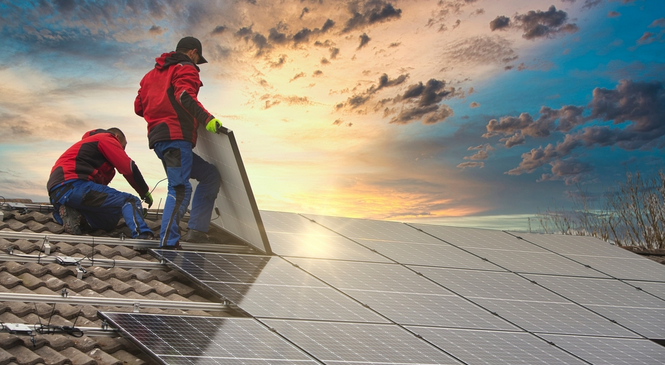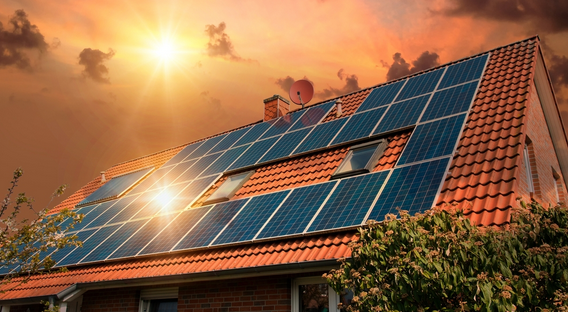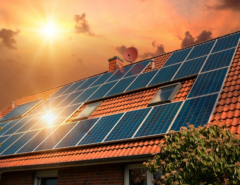Have you ever wondered how old solar cell technology is? Take a guess before you read ahead. What was the number that formed in your mind – 20 years? 30 years? Nope. The first functioning solar cell was built by Russian physicist Alexander Stoletov all the way back in 1888 – that’s 136 years ago! Stoletov was building on the foundations laid by French physicist Alexandre Becquerel, who had discovered the photoelectric effect back in 1839. Photovoltaic power systems have come a long way since then – from producing single-volt charges in a lab, to powering entire cities and spearheading the war on climate change.
The road has not been easy. Despite Becquerel’s and Stoletov’s 19th century discoveries, most of the world paid little attention to photovoltaic renewable energy until the middle of the 20th century. The reason was simple: solar panels were simply too inefficient to be of any practical use, while also being rather expensive to manufacture. This changed in the 1950s as America geared up for the space race against the Soviets – Bell Labs from New Jersey developed a silicon-based solar panel with 6% efficiency, just barely enough to be used in spacecraft. For comparison, modern photovoltaic energy panels have an efficiency of 20% to 25%. However, it was still prohibitively expensive to make these early cells and they remained confined for super-special uses only.
The 1970s oil crisis triggered new interest in renewable energy. Hoffman Electronics, based out of California, made practical, usable photovoltaic energy panels with 10% to 14% efficiency. If you could afford them, you could power a single home or building with a mix of these panels and wind energy. By 1977, solar panels installed around the world were producing 500 kW of power. Of course, this wasn’t enough to make any meaningful impact, but it was a start.
In the 1980s, more and more universities and corporations began experimenting with various solar technologies. In 1981, a Spanish company, Isofoton, started mass production of bifacial (two sided) photovoltaic energy panels. The University of New South Wales, Australia demonstrated a working silicon cell with 20% efficiency in 1985. In 1988, a joint team consisting of German professor Michael Grätzel and American chemist Brian O’Regan developed a dye-sensitized cell, which utilized an organic dye compound and cost half as much as popular silicon cells. Grätzel improved on this invention in the late 1990s, reaching 11% efficiency at a reasonable cost.
Both US Presidents George Bush and Barack Obama installed solar panels in various parts of the White House in the 2000s. In 2006, a significant milestone was reached – Boeing’s subsidiary, Spectrolab Inc., created a multi-junction solar cell with 40% efficiency. It was revolutionary: the cell was composed of multiple layers of material, each of which captured only one portion of the solar spectrum. Finally, there was hope for photovoltaic power systems to power not just individual buildings but entire cities, maybe even the whole world!
By 2011, mass production of silicon cells was reaching unprecedented levels in China, and costs had dropped to just $1.25 per watt. The falling costs meant that even developing countries could now easily afford solar installations. India launched its solar mission, and rapidly installed a colossal 73 Gigawatts by the end of 2023. Just two parks – Pavagada in Karnataka, and Bhadla in Rajasthan, have a combined capacity of 4.3 Gigawatts. Bhadla is the world’s largest solar power plant by area as well as power output. India has also been encouraging local production of photovoltaic power systems, especially silicon panels.

The future of solar is promising, with new developments in perovskite-coated cells leading to more than 30% efficiency at an incredibly low cost. A perovskite is a crystal structure that can be made of different types of materials (the most common ones being lead and tin-halide) that is coated on top of a solar cell, increasing its efficiency. A German research team created a perovskite cell with 32.5% efficiency in December 2022. There are minor issues with the long term stability of these perovskite structures, which if solved would lead to a near-immediate revolution in solar technology!




